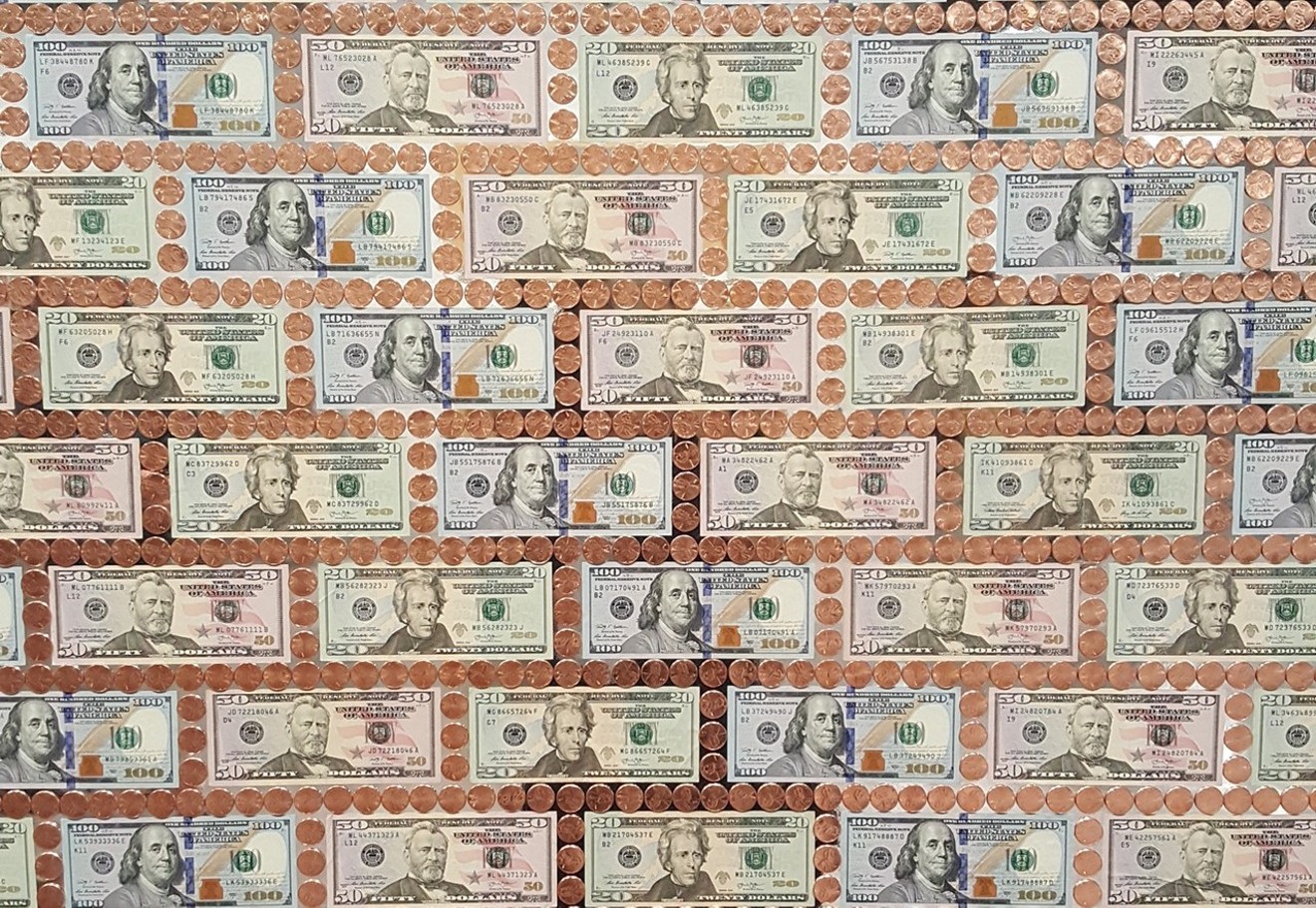Like most things, the art world is a microcosm of what's happening globally. Representatives of Art Basel tout this year's political art, the growth of diverse representation from women artists and artists of color, and how Basel plays a role in art's significance in society, both locally and globally. What's casually ignored in these types of conversations are things such as ticket prices, sale prices for the art, and who, exactly, these collectors are.
Of course, artists deserve to get paid for their work. For his piece American Quilt 2018: Wall ($), Rob Pruitt used 61 hundred-dollar bills, 62 fifty-dollar bills, and 63 twenty-dollar bills to create a rectangle of cash over a chrome-covered canvas. As with any product, the cost to purchase it should exceed the cost of its materials, which would mean this work costs at least $10,500. And in the free market of ideas, Pruitt shouldn't be limited by materials in his pursuit of creative expression and control.

Michel François' A l'arraché. See more photos from Art Basel Miami Beach 2018 here.
Photo by Taylor Estape
It's arguable that these pieces are more a critique of opulence than an attempt to play into it. Shelagh Wakely's Beyond Consumption is a dessert tray of gilded fruit rendered inedible by the exact thing that's meant to make them valuable. Zanele Muholi's photograph from her series Hail the Dark Lioness depicts the artist classically posed with a headdress made of U.S. dollars, bringing up the history of imperialist exploitation of African countries that built this nation and continues to build others. On the one hand, Muholi could be elevating her position the same way the golden fists of Glenn Kaino's Bridge recall Tommie Smith's triumph in the 1968 Olympics. Yet the echoes of oppressive systems are undeniable.

Rirkrit Tiravanija's untitled 2007 (rich bastards beware no. 1). See more photos from Art Basel Miami Beach 2018 here.
Photo by Taylor Estape

Elisabetta Benassi's Anyone in the Street. See more photos from Art Basel Miami Beach 2018 here.
Photo by Taylor Estape
In Teresa Margolles' Tela en el











